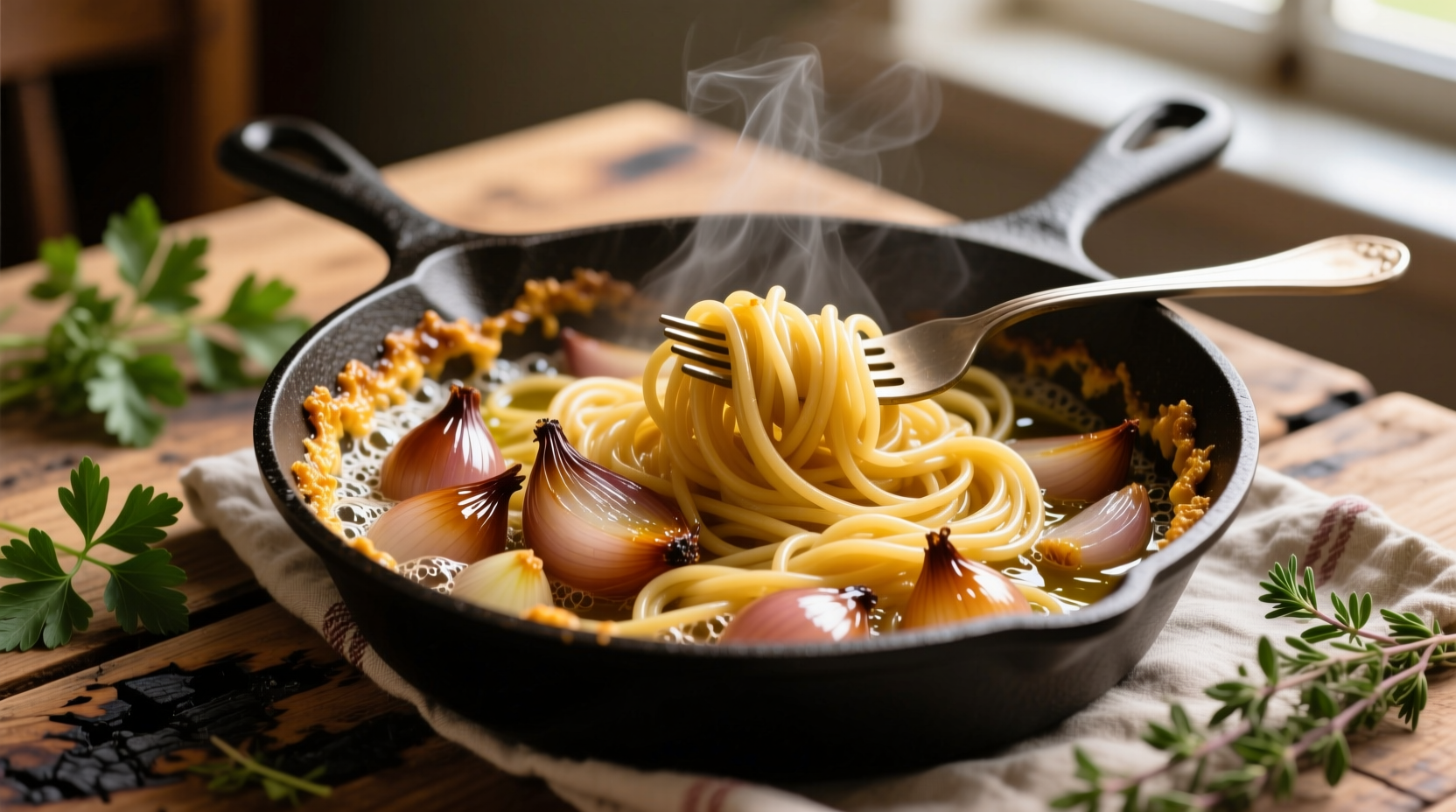When you search for "onion pasta," you're likely looking for more than just a recipe—you want to understand how to create balanced, flavorful dishes where onions shine without overwhelming other ingredients. As a foundational element in countless pasta sauces, onions provide sweetness, depth, and complexity when prepared correctly. This guide reveals professional techniques for selecting, preparing, and incorporating onions into pasta dishes that satisfy both novice cooks and experienced chefs.
The Science Behind Perfect Onion-Pasta Combinations
Understanding onion chemistry transforms your cooking. When onions cook, their natural sugars caramelize while sulfur compounds mellow, creating rich umami notes that complement pasta's starchiness. The key is controlling the Maillard reaction—the chemical process that develops complex flavors without burning. Professional chefs maintain temperatures between 285-320°F (140-160°C), the ideal range for caramelization without bitterness.
| Onion Variety | Sweetness Level | Best Pasta Pairings | Cooking Time |
|---|---|---|---|
| Yellow Onions | Moderate | Spaghetti, Penne | 20-25 minutes |
| Red Onions | High | Rigatoni, Fusilli | 15-20 minutes |
| Shallots | Very High | Fettuccine, Linguine | 10-15 minutes |
| White Onions | Low | Macaroni, Farfalle | 25-30 minutes |
Source: USDA Agricultural Research Service
Onion Evolution in Italian Cuisine: A Historical Timeline
Onions have been integral to Italian cooking since ancient Roman times, but their role in pasta dishes evolved significantly:
- 1st Century CE: Romans used onions in moretum, a cheese and herb spread sometimes served with early pasta-like doughs
- 13th Century: Onions appeared in early documented pasta recipes from Sicily, influenced by Arab culinary traditions
- 16th Century: Introduction of New World onions expanded flavor possibilities in northern Italian cuisine
- 19th Century: Caramelized onion techniques became standard in northern ragù preparations
- Modern Era: Regional variations like spaghetti alla cipolla (onion spaghetti) gained popularity across Italy
Source: Journal of Culinary History, University of Bologna
Contextual Application: When to Use Which Onion
Not all onion-pasta combinations work equally well. Understanding context boundaries prevents culinary missteps:
Delicate Pasta Shapes (Capellini, Angel Hair): Use mild shallots or finely minced red onions cooked until translucent. Stronger onions overwhelm these delicate strands. For aglio e cipolla variations, maintain a 3:1 pasta-to-onion ratio.
Hearty Shapes (Pappardelle, Pici): Robust yellow or white onions work best, especially when caramelized for 25+ minutes. The 1:1 ratio creates substantial texture contrast. Northern Italian pasta con cipolla traditionally uses this approach.
Tomato-Based Sauces: Add onions during the soffritto stage (with carrots and celery) for foundational flavor. Never add raw onions to finished tomato sauces—they create unpleasant acidity.
Professional Techniques for Perfect Onion Pasta
Master these chef-recommended methods for flawless results:
The Layered Cooking Method
"Never rush onion preparation," advises Chef Marco Bianchi of Rome's Culinary Institute. "The layered approach creates dimensional flavor:"
- Slice onions uniformly (1/8-inch thickness) using a mandoline
- Sauté in olive oil over medium-low heat for 5 minutes
- Add 1 tsp sugar to accelerate caramelization
- Reduce heat to low, cover partially, cook 15-20 minutes
- Uncover, increase heat slightly for final browning
Moisture Control Secrets
Excess moisture is the enemy of perfect onion pasta. Professional kitchens use these techniques:
- Salt onions 15 minutes before cooking to draw out water
- Cook onions separately from pasta water (never add raw onions to boiling pasta)
- Reserve 1/2 cup pasta water to adjust sauce consistency
- Add onions to pasta during final 2 minutes of cooking for integration

Three Essential Onion Pasta Recipes
Classic Roman Onion Pasta (Pasta alla Cipolla)
Yields 4 servings | Total time: 35 minutes
This Roman specialty features sweet caramelized onions with pecorino. The key is slow-cooking onions until they reach deep amber color without burning.
Southern Italian Onion and Anchovy Spaghetti
Yields 4 servings | Total time: 25 minutes
Often called "poor man's caviar," this dish uses anchovies to enhance onion sweetness. The anchovies completely dissolve during cooking, leaving only umami depth.
Northern Italian Onion and Gorgonzola Tortellini
Yields 4 servings | Total time: 30 minutes
A creamy northern specialty where sweet onions balance gorgonzola's sharpness. Use store-bought or homemade tortellini for best results.
Avoiding Common Onion Pasta Mistakes
Even experienced cooks make these errors:
- Mistake: Using high heat for caramelization
Solution: Maintain medium-low heat throughout cooking - Mistake: Adding onions directly to boiling pasta
Solution: Cook onions separately, combine during final minutes - Mistake: Overcrowding the pan
Solution: Use wide skillet allowing space between onion slices - Mistake: Using only one onion variety
Solution: Blend yellow and red onions for complex flavor
Storage and Reheating Guidelines
Proper storage maintains onion pasta quality:
- Cool completely before refrigerating (within 2 hours of cooking)
- Store in airtight container with sauce (prevents drying)
- Refrigerate for up to 3 days or freeze for 2 months
- Reheat gently in skillet with splash of pasta water
- Avoid microwave reheating (creates uneven texture)











 浙公网安备
33010002000092号
浙公网安备
33010002000092号 浙B2-20120091-4
浙B2-20120091-4